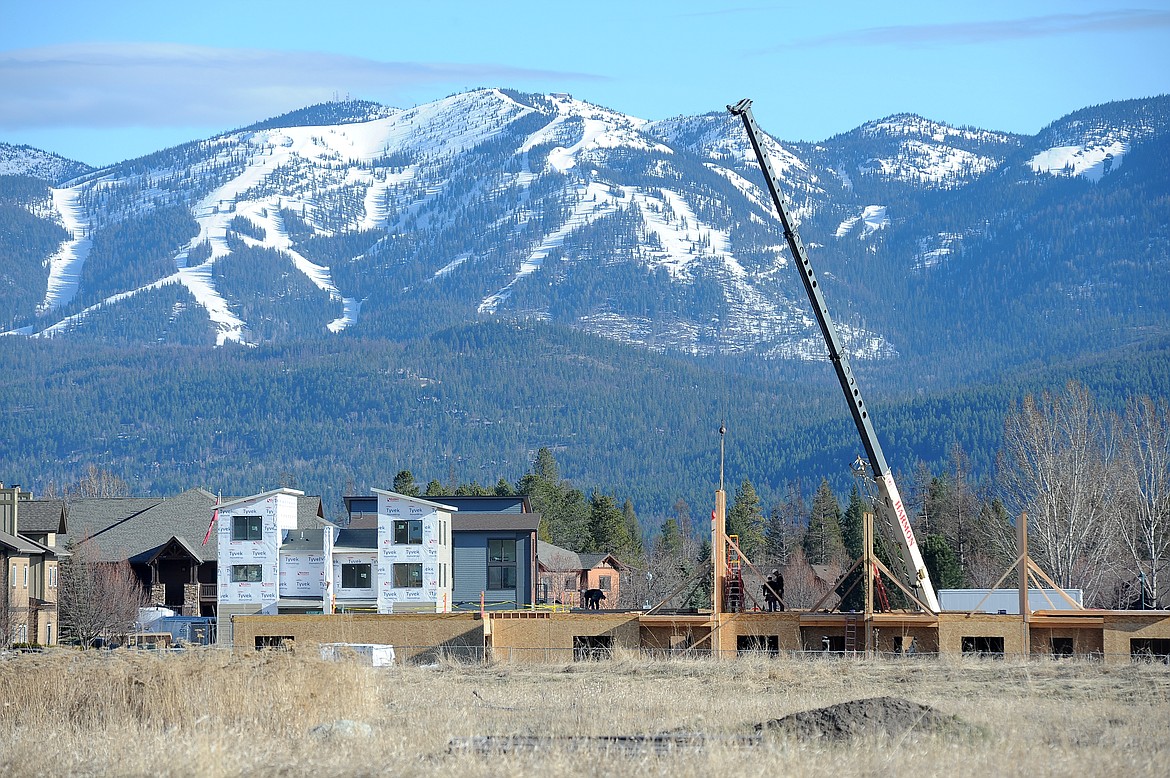Census shows growth in almost every corner of the Flathead
Results of the 2020 Census show Flathead County gained more than 13,400 residents over the previous decade, a nearly 15% increase that gave the county a population of more than 104,000 and made it the fourth largest county in Montana.
Roughly half of that growth occurred within the city limits of Kalispell, Whitefish and Columbia Falls, while the rest occurred in unincorporated parts of the county.
While the population boom has driven up housing prices and likely contributed to a labor shortage affecting local bars, restaurants, coffee shops, hotels and retailers, officials say long-term planning has left them prepared to meet growing service and infrastructure needs as new subdivisions and accessory dwellings spring up across the valley.
For a variety of reasons — including a data collection and verification process hindered by the pandemic, the Trump administration's failed effort to add a citizenship question, and small, deliberate statistical errors designed to protect people's privacy — the publicly available Census results are not exact.
But they show the city of Kalispell gained 4,631 residents over the decade that ended in April 2020 — a 23% increase resulting in a population of 24,558.
That growth rate is just a hair above the rate of 2% per year anticipated in Kalispell's growth policy, but City Manager Doug Russell said it's not a major concern. The growth policy, based on long-term projections and updated every few years, details projects the city will have to complete as the population grows, such as road upgrades and extensions of water and sewer lines.
"The more rapid the growth is, the faster those projects get triggered," Russell said.
Funding for most capital projects tends to keep up with demand, Russell said, as much of the city's infrastructure depends on flat user fees, though property tax revenue doesn't immediately start flowing as homes are built in new subdivisions.
"It may lag a little, but we'll catch up," he said.
It's anyone's guess how many people have relocated to the Flathead since the Census data were collected. Russell said estimates that he's heard "are all over the place."
"I think it's safe to assume there's been a little bit of an increase in the desirability of our area," he said.
WHITEFISH GREW at a similarly fast pace, gaining 1,394 residents over the decade — a 21.9% increase for a population of 7,751. And Columbia Falls added 620 people for a population of 5,308, a 13% increase.
"The city of Columbia Falls has planned for the growth that we are currently experiencing," City Manager Susan Nicosia said in an email. "The city has planned for the growth for all city services — police, fire, water, sewer, streets, parks, etc."
Nicosia said many of the lots currently being developed in Columbia Falls were platted in the early 2000s. New subdivisions, including The Benches and Garnier Heights, were considered at the time and after the 2008 recession but haven't moved forward until now, she said.
That leaves fewer than 100 vacant lots — commercial and residential — that can be developed within the city's current boundaries.
Nicosia said the Columbia Falls City Council recognized the growth was straining police and fire services three years ago and began reviewing funding sources before voters approved a resort tax in June 2020.
The council delayed the implementation of that tax until this October due to the pandemic but anticipates it will help the city keep up with demand for services.
Columbia Falls also maintains a growth policy based on 20-year projections, as well as water and sewer preliminary engineering reports that anticipate where development might occur around the city, Nicosia noted.
NEWCOMERS HAVE settled in unincorporated communities throughout the valley, too.
"I don't think they're differentiating when they're coming in," said David Fetveit, owner and managing broker of PureWest Christie's International Real Estate. "They have their budget, and they have their criteria of what they're looking for, and it's really irrelevant whether it's in the county … or whether they're in city limits. They just want to be in the Flathead Valley."
Evergreen grew by 533 people, or 7%, for a population of 8,149, and the adjacent Helena Flats area grew by 163 people, nearly 16%, for a population of 1,206, according to the Census.
To the west, Marion gained 233 people, a 26% increase for a population of 1,119, while Kila gained 32 people, an 8% increase for a population of 424.
And along the U.S. 2 corridor leading to Glacier National Park, the populations of Hungry Horse and West Glacier held steady with only single-digit changes, according to the Census, while Martin City lost 39 people and Coram gained 33.
After two years of what called a "roller coaster ride" in the local real estate market, Fetveit said the market remains hot, albeit somewhat calmer than at the height of the surreal pandemic "Zoom boom."
"The only real consensus we have is that some of the frenzied hysteria is kind of starting to quiet. But it doesn't mean that there's not a lot of people that want to be here," Fetveit said.
"At one point there was a house that came on [the market] over the summer. I think it was listed at like $475,000, and there were like 23 offers. And I think if that house were to come on today, maybe it would have five offers instead of 23," he said. "It's still a strong market. Prices are holding. But it's not absolutely crazy."
Prices are so high, Fetveit said, that some prospective buyers quickly start searching for homes elsewhere, including similar but more affordable mountain communities in Wyoming and Idaho.
"A lot of people who just now are starting their search are realizing that there's either nothing available, or what is available is out of their price range," he said.
Assistant editor Chad Sokol may be reached at 406-758-4439 or csokol@dailyinterlake.com.


